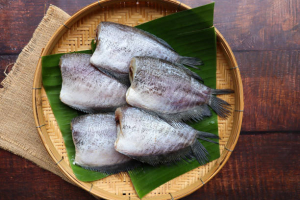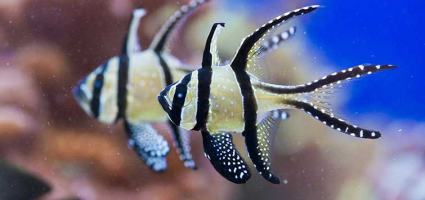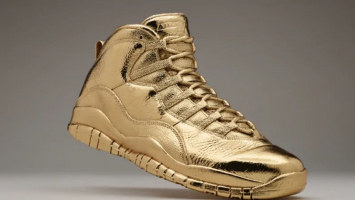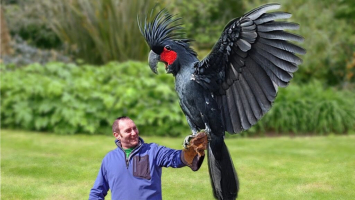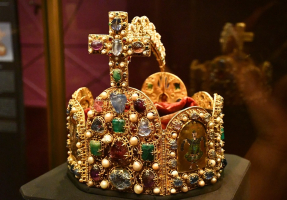Top 13 Most Expensive Tropical Fish
A fish's price is generally determined by its uniqueness, rarity, attractiveness, and distinctive features or factors. Some fish can cost up to $400000 based ... read more...on these criteria! However, fish collectors and enthusiasts around the world have paid even higher prices for rare specimens of fish. Toplist will introduce the 13 most expensive tropical fish ever sold.
-
Platinum Arowana is the world's rarest and most expensive tropical fish, and it is so valuable that it is implanted with a microchip before it is allowed to mature sexually. This fish can grow to be quite huge and can be found on numerous continents.
Platinum Arowana is a pearly white kind that has an uncommon genetic abnormality. They are thought to be the bearers of luck throughout Asia, bringing good health and fortune to their owners.
Arowanas come in a variety of colors, including gray, gold, and silver, but the platinum morph is the most beautiful and sought-after. These massive, ancient-looking fish have unusually angled teeth and enormous metallic scales.
In the wild, these bony fish can grow to the size of a miniature human – 3 feet. Another distinguishing feature of these fish is that their dorsal and anal fins grow all the way to their caudal fins. The eyes are also huge, the mouth is slant, and the tail is tapering.
They swim with forked barbels in their lower jaws to detect movement in the water. The most stunning and costly feature of Platinum Arowana is its unique hue or lack thereof.
Because of their unusual yet eerie similarity to dragons, they are regarded as dragon fish in China and other regions of Asia. These intimidating beasts are also violent, predatory, and, of course, carnivores! So raising them isn't exactly easy.
Price: $400,000
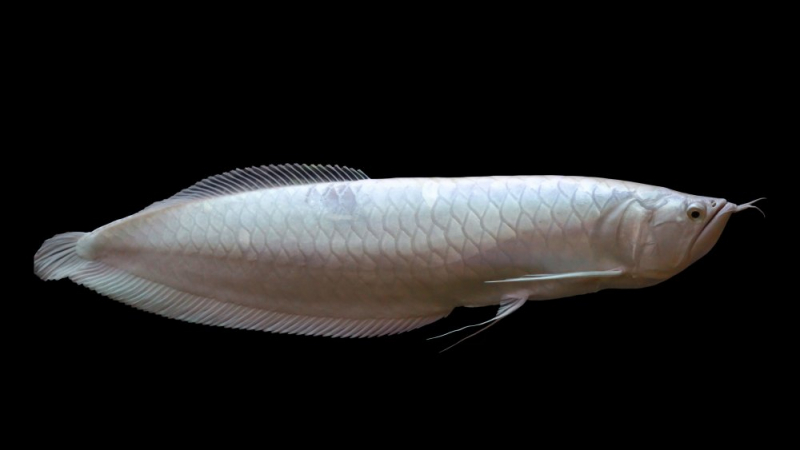
Photo: grunge.com Video: Brother's Aquatic Hub -
The most expensive tropical fish on our list today is the Freshwater Polka Dot Stingray. Did you know that this black and white stingray originally went for $100,000? The exorbitant price tag is due in part to the fact that exporting them from Brazil's Xingu river region is now forbidden.
The most expensive Freshwater Polka Dot Stingray was a genetically altered type with a U-shaped head rather than a regular round shape. The fish had to be hand-fed, which was unusual. If the fish were released into the wild, they would have no chance of survival.
The fact that this stingray is a freshwater species, as opposed to most others, adds to the fish's uniqueness. Polka Dot Stingrays often have oval, black bodies covered in white spots. The underside, on the other hand, is grayish with no markings. The eyeballs protrude somewhat, allowing them to easily observe what's above them.
These fish have particular sensing organs around their noses and mouths that allow them to sense electric fields generated by other fish. They have powerful jaws that they utilize to consume prey - shells, bones, and all. And, of course, they have a deadly barb along their tail to discourage predators.
Freshwater Polka Dot Stingray is among the most dangerous aquatic creatures. As a result, they are frequently kept alone in aquariums.
Price: $100,000
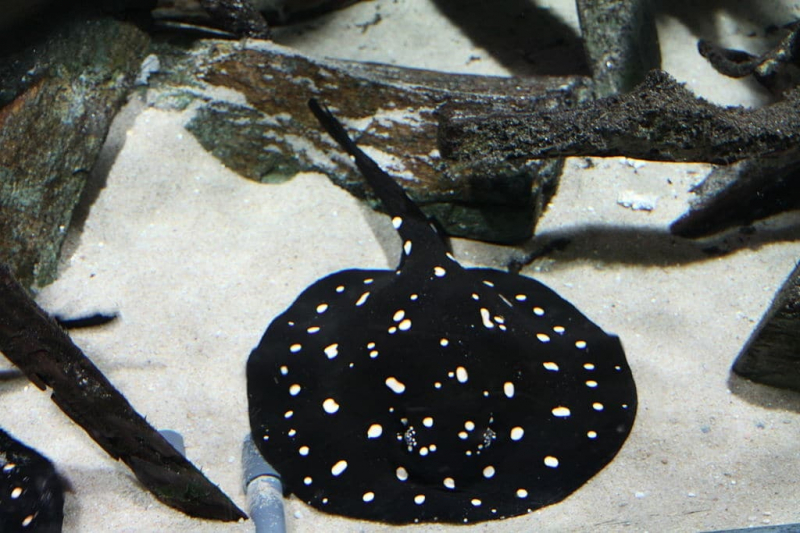
Photo: buildyouraquarium.com Video: santosh Patel -
This is a really exotic fish that is popular among collectors and was put on display in public a few years ago. Divers have a difficult time capturing or spotting it because it is only found deep within oceans and other bodies of water.
The Peppermint Angelfish is a small species of marine ray-finned fish, a marine angelfish in the Pomacanthidae family. It is native to the Cook Islands and can be found in the central South Pacific Ocean.
The body of the Peppermint Angelfish is deep and oval-shaped, with five white vertical bands on a reddish-orange background. The caudal fin is transparent, whereas the dorsal and anal fins have white edges. The chin and face are white. This species can grow to a maximum length of 7 cm.
The eastern central Pacific Ocean is home to the peppermint angelfish. It has only been recorded from Rarotonga in the Cook Islands, but it is expected to be recorded further in the region.
The Peppermint Angelfish can be found at depths ranging from 55 to 120 meters (180 to 394 feet) on coral debris, overhangs, and caves on the reef's steep outer slopes. Its food is unknown, however, it is thought to consist of worms, crustaceans, sponges, tunicates, and detritus. It was captured in pairs or small groups.
The Peppermint Angelfish are infrequently exported as aquarium specimens and can command high prices (a single specimen was offered for sale for $30,000).
Price: $30,000
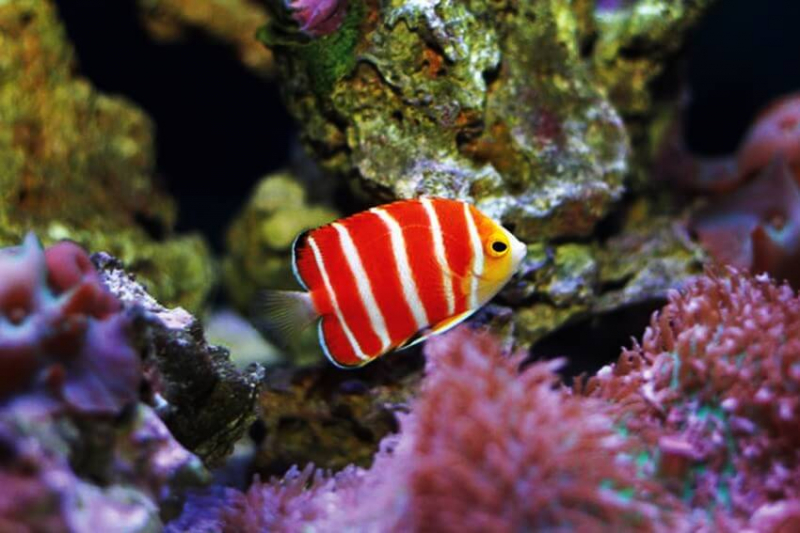
Photo: alux.com Video: Kala Senja -
The Masked Angelfish is a species of marine ray-finned fish, a marine angelfish in the Pomacanthidae family. It is only found in Hawaii.
At all ages, the Masked Angelfish is primarily a bright white color. The youngsters have a black patch covering the majority of their heads. As the fish grows, this breaks down, beginning with the lips, which turn bluish-white and progressing to the caudal fins, which darken to become black. This species is a sequential protogynous hermaphrodite, and the younger sexually mature individuals are all females. The amount of black on the head decreases. The black eventually just covers the eyes, the chin, and the edge of the operculum and its operculum spine.
They have yellow pelvic fins as well. They may change sex to males when they reach a length of 15 to 18 centimeters (5.9 to 7.1 in). When they do this, they develop a striking orange-yellow pigmentation on their pectoral fins, the entire face, and the margins of their dorsal, anal, and pelvic fins. Males grow lengthy filamentous extensions from their caudal fin lobes. The maximum overall length of this species is 21 cm (8.3 in).
The Masked Angelfish is only found in the Hawaiian Islands, and it is most common in the northwestern islands. The Masked Angelfish is found at depths ranging from 10 to 150 meters (33 to 492 feet), across rocky reefs, and on the outer slopes of reefs. This species' diet consists of green algae from the genus Codium, as well as planktonic creatures and fish eggs. The masked angelfish, like all other angelfish, is a protogynous hermaphrodite, with all individuals initially being female and the dominant ones transitioning to males.
Price: $20,000
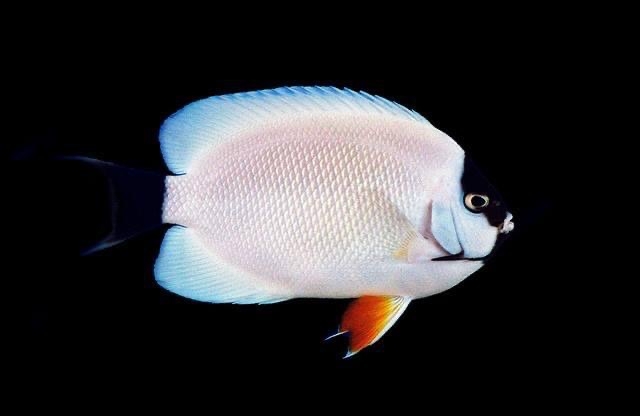
Photo: advancedaquaticecosystems.com Video: exallias -
These tiny little fish attract an exorbitant price of roughly $8000. The Bladefin basslet (Jeboehlkia gladifer) is one of the most elusive saltwater fish ever caught and sold to a collector.
These fish reside at amazing depths of more than 150 meters, making them nearly impossible to capture. On the rare times that they have been apprehended, they have frequently died in transit, making those who do survive the journey extremely important.
It gets its name from its unusual blade-like dorsal fin. Colors range from bright orange to white and are typically found in the Caribbean.
Quirky and full of personality, this fish is high on collectors' wish lists due to its scarcity. They are difficult to distinguish from other fish in an aquarium store. It barely grows to about 1.5 inches in length and is classified as a deep water reef fish, which explains why collecting specimens is tough. It's no surprise that finding these fish for sale is unusual.
Bladefin basslet has a relatively elongate and compressed body, a large eye, a pointed snout, a large mouth that is slightly oblique, and a projecting lower jaw. The posterior margin of the preopercle features fine serrations, and the gill cover has three spines facing forward and three spines pointing back, with the middle spine being the longest. The dorsal fin has eight spines, the first of which is tiny and concealed, and the second of which is large and blade-like, as well as nine soft rays.
Deep incisions run through the membranes that connect the spines and soft rays. The caudal fin has a rounded shape. The head and body are white to pink to reddish in hue, with a ref iris and red dorsal region of the head and nape. A white band runs along the middle of the head from the upper lip to the 2nd spine in the dorsal fin, and another wide red bar runs vertically across the body from the soft rayed portion of the dorsal fin to the anal fin. The anal and dorsal fins have white borders, whereas the pelvic fins are red with a white posterior margin.
Price: $8000
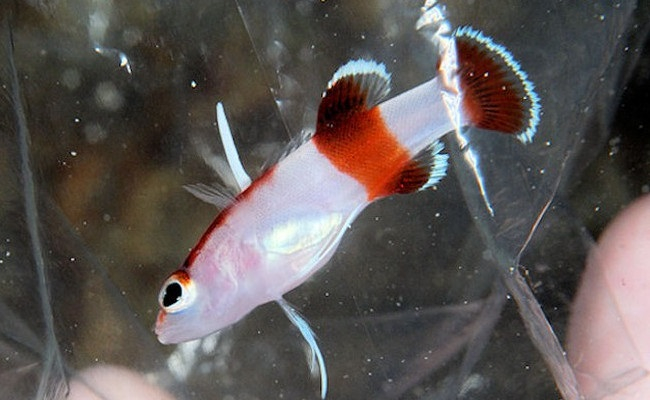
Photo: arenapile.com Video: Reef Builders -
The Golden Basslet, which is not only rare but also difficult to get, is fifth on the list of the most expensive tropical fish. The golden basslet is a species of fish in the Grammatidae family that lives on coral reefs in the Caribbean Sea.
The fish stands out among the basslets because it has a primary color that is not purple. Instead, it is mostly golden yellow with purple patches on its fins and a faint trail on the belly near the fins. The dorsal fin also has a black mark. It is smaller than the Royal gramma, measuring about 7 cm (2.7 in).
This species is thought to be mostly endemic to the waters surrounding Cuba. A solitary specimen, however, has been discovered off the shore of Little Cayman Island in the Cayman Islands. It is unclear whether this is a different population or a displaced person.
This species is popular as an aquarium pet, however, it is not as well known as other species due to its recent discovery. It is noteworthy that it is the first basslet to have a separate color morph produced by enthusiasts, namely the "Platinum" variation, in which the purple coloration is replaced with white coloration.
Price: $8,000
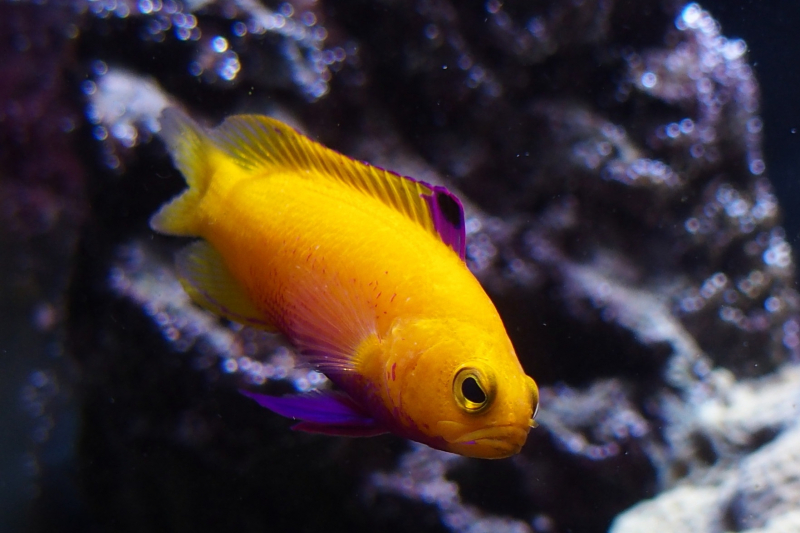
Photo: en.wikipedia.org Video: Bruce Carlson -
Neptune Grouper (Cephalopholis igarashiensis) is also known as the gaudy hind, gold bar grouper, and Japanese cod. Aside from its rarity, one reason for this grouper's $6000 price tag is its distinctive color of pinkish-orange and yellow with white stripes and black patches. Another reason is that they are difficult to capture alive because of their vulnerability to mortality from rapid decompression. These groupers may grow to be up to 17 inches long and survive for up to 30 years!
The depth of the body is bigger than the length of the head in Neptune Grouper; the normal length is 2.0 to 2.4 times the depth of the body. The head's dorsal profile is straight or mildly concave to beyond the eye, however, the nape is clearly convex. The preopercle is spherical, and the edges contain fine serrations; however, the serrations on the ventral margin are slightly less fine, giving it a more uneven look, but the serrations stay enclosed inside the skin. The dorsal fin has nine spines and fourteen soft rays, whereas the anal fin has three spines and nine soft rays. The caudal fin became rounded.
This species' general color is reddish-orange, with seven wide, lemon-yellow bars on the upper flanks that stretch to the dorsal fin and three large yellow irregular oblique stripes on the head. Juveniles are yellower and darker on the lower body, with multiple white bars and a huge black eyespot on the soft rayed region of the dorsal fin. In addition, they have blackish pelvic fins and a black patch at the base of the anal fin. This species can grow to a maximum standard length of 43 centimeters (17 in), however, the average length is 25 cm (10 in).
Neptune Grouper, sometimes known as the gaudy hind, gold bar grouper, or Japanese cod, is a deepwater species of ray-finned fish in the subfamily Epinephelinae of the family Serranidae, which also contains anthias and sea basses. It can be found in the Indo-Pacific at depths of 80 to 250 m (260 to 820 feet) on coral reefs.
Price: $6,000
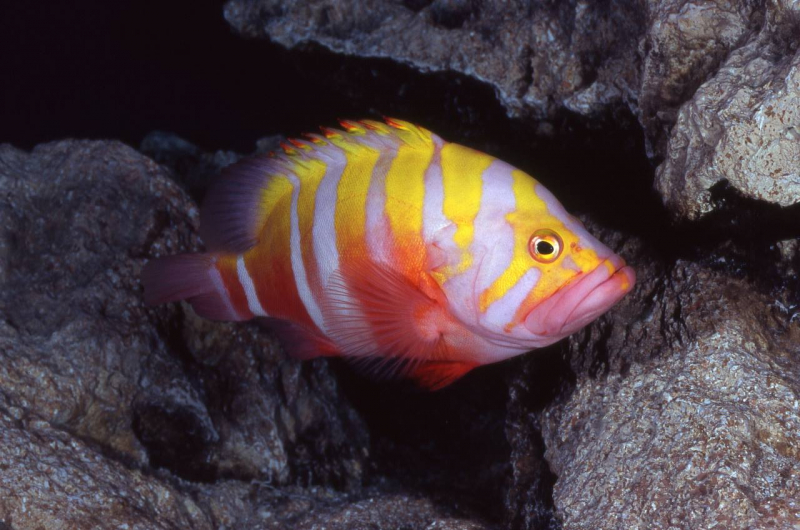
Photo: churaumi.okinawa Video: Reef Builders -
Nami Green Arowana are native to Malaysia's northern Kedah state, near Pedu Lake. Arowana fish are popular as pets, but only in common colors like silver. Nami Green Arowana is much more difficult to find on the pet market since it is caught by fishermen who do not observe sustainable fishing practices. As a result, they're getting increasingly scarce.
This variation has a dramatic color gradient of orange and green that runs through the body. It has orange fins and a yellow-orange scale patch near the head. When Nami Green Arowana matures, the batik stripes will be visible all over the body.
The water temperature for Nami Green Arowana should be between 26 and 28 degrees Celsius, with a PH of 6.0 to 6.5. To keep the quality of Green Nami Arowana in good condition, the temperature and PH of the water must be in the exact range. Aside from that, the Nami Green Arowana's batik pattern on its gills and scales makes it stand out. This is one of the few species of Asian Arowana on the market.
Furthermore, because of its vast dissemination, Nami Green Arowana comes in a variety of color variants. Most Nami Green Arowana are green/greyish in hue, but some have a deep purple foundation color, which boosts their market value.
The Nami Green Arowana goes extinct. Because of the mentality of anglers or fishermen who uncontrollably catch fish without instruction, they is progressively dying off.
Breeding for Nami Green Arowana is highly promising for the time being due to a lack of angler or fisherman awareness to ensure the species' survival in the future.
Price: $5000
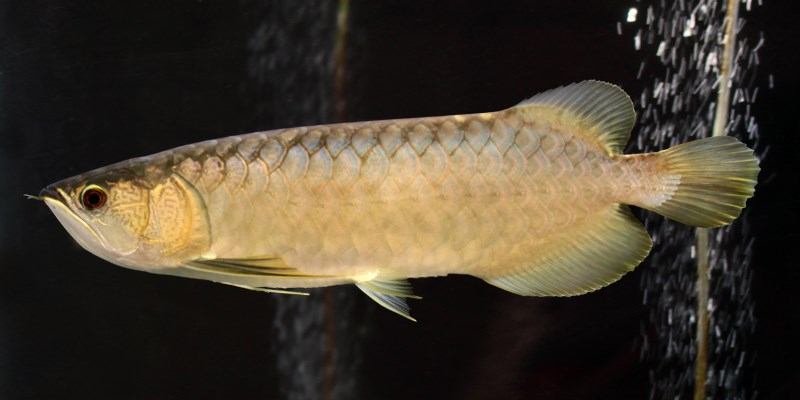
Photo: glaquatic.com Video: santosh Patel -
The Australian Flathead Perch is a species of marine ray-finned fish, related to the groupers and classified within the subfamily Epinephelinae of the family Serranidae. It is found in the eastern Indian Ocean and in the Western Pacific Ocean.
The Australian Flathead Perch has an overall dark orange color broken by six black-margined lilac stripes along each flank, the background orange color is darkest on the center of the flanks, fading to yellow on the back and belly. The spines in the dorsal fin are yellowish with a transparent membrane between them. The second dorsal fin has a dark base and a wide-angled yellow band just short of its edge which runs from the first soft ray to the tip of the seventh soft ray.
The edge itself is whitish in color and the remaining soft rays are reddish-brown. The anal fin shows a similar pattern to the dorsal fin. The pectoral fins and the pelvic fin are pinkish yellows in color. There is a black, blue-edged eyespot at the base of the tail. The caudal fin is brown with its outer margin having a white edge at its corners. This species is also characterized by the forward placement of its eyes and its wide mouth. It attains a maximum recorded total length of 15 centimeters (5.9 in).
The Australian Flathead Perch occurs in inshore waters where it is found in caves and crevices in coral reefs and is generally solitary.
Price: $5,000
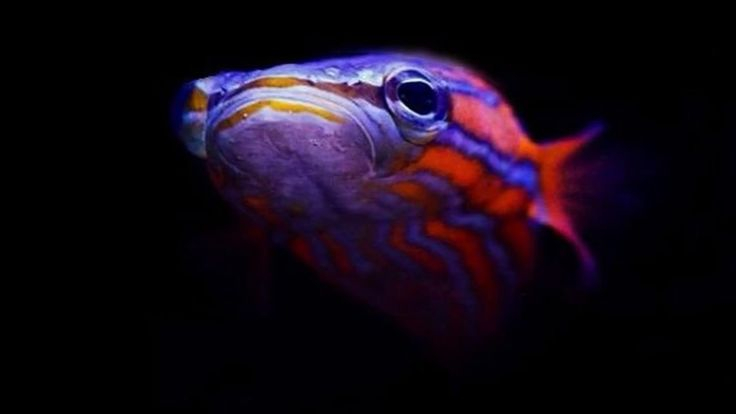
Photo: pinterest.com Video: The Aquatic Design Centre -
Wrought Iron Butterfly Fish, also known technically as Chaetodon Daedalma, is rarely seen in the United States because it is rarely imported. This makes it one of the most difficult fish to find on our list, but if you look hard enough, you'll undoubtedly find it. Although keeping the Wrought Iron Butterflyfish in a coral habitat is not recommended, there have been several successful occurrences over the years.
When it comes to appearance, this is without a doubt one of the most attractive fish in the world, despite not being the most colorful. It gets its name from the visible scale patterns that mimic wrought iron decorations. The fish's back end, as well as the tail region, frequently have brilliant yellow sections that contrast wonderfully with the dark, wrought iron appearance. In terms of size, the Wrought Iron Butterflyfish averages 6 inches in length, but some can reach 7 inches.
These are calm fish that can be kept alone or in groups of three or five. They play and interact well with one another, so you won't have to worry about any mishaps when you're not looking. These ravenous feeders favor meaty foods and certain algae-based foods for their diet. They can be fed caught salmon meat, as well as cod and tuna if the portions are sliced down to about 4mm in size.
Even though it is not a difficult fish to keep in terms of diet or behavior, the Wrought Iron Butterflyfish is very particular about water quality.
Price: $2,700
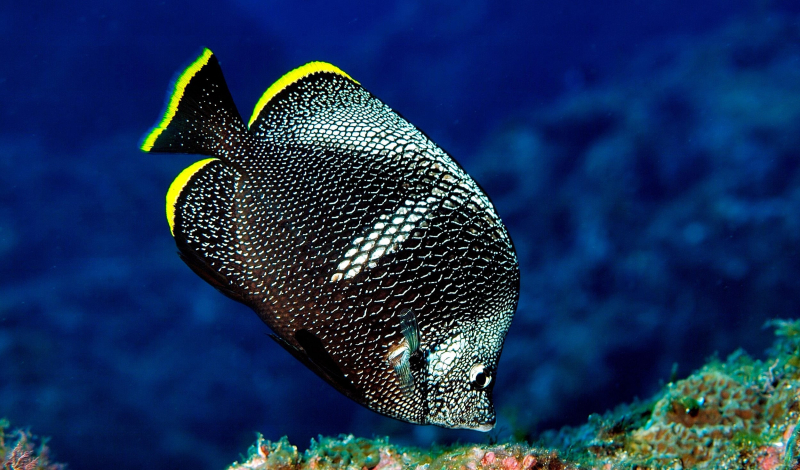
Photo: australiangeographic.com.au Video: Kala Senja -
The Clarion Angelfish (Holacanthus clarionensis) is a species of marine ray-finned fish and a member of the Pomacanthidae family. It is found nearly entirely near islands off the Pacific coast of Mexico in the eastern Pacific Ocean.
The Clarion Angelfish has a quadrilateral, laterally compressed body. It has a small mouth filled with bristle-like teeth. The body and fins of juveniles are yellowish-orange in color, with a number of blue vertical bands that fade and eventually disappear as the fish matures. Blue lips and dorsal and anal fin edges are also possible in juveniles.
The adults have a brownish face, with the adjacent part of the body behind the reddish-orange and the posterior body being browner. The dorsal and anal fins are bright orange while the caudal fin is vermilion. The dorsal fin contains 14 spines and 17-19 soft rays while the anal fin has 3 spines and 19-19 soft rays. This species attains a maximum total length of 20 centimeters (7.9 in).
The Clarion Angelfish has a very limited range in the Eastern Pacific Ocean, being largely restricted to the Revillagigedo Islands of Mexico. Vagrants have occasionally been reported from the southern tip of Baja California and the southeastern part of the Gulf of California, as well as Clipperton Island, a French territory.
Clarion Angelfish can be found at depths of up to 30 meters amid rocky reefs (98 ft). They are often seen as single individuals or as shoals.
Price: $2,500
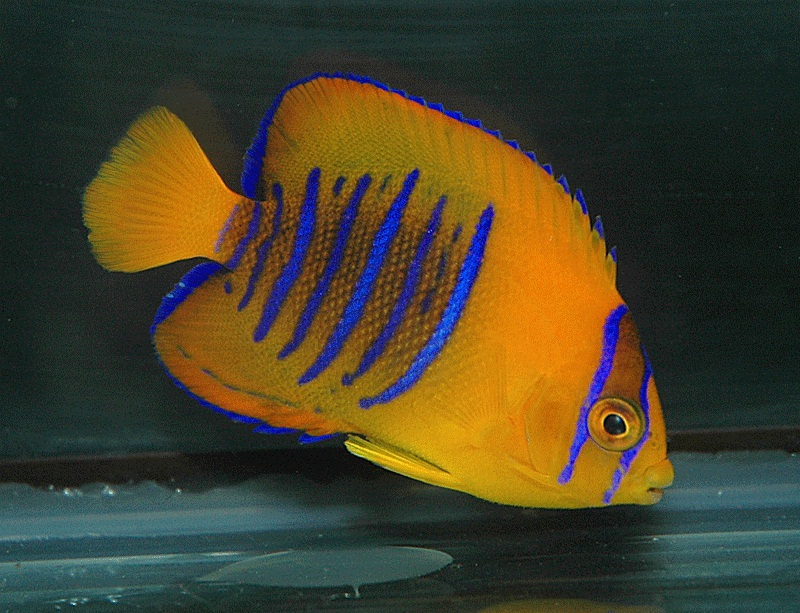
Photo: pinterest.com Video: happy nguyen -
Golden CrossBack Arowana is reflective, sparkling, big, distinct, and neat. They become more colored as they mature into adults. Golden CrossBack Arowana can reach heights of 90 cm (35 inches). It's just the greatest you'll ever want at a reasonable price. The Asian Arowana is a freshwater fish native to Southeast Asia that lives in slow-moving rivers, waterways, and streams.
Due to its magnificent gold color metallic sheen that sparkles when viewed under full-spectrum aquarium lighting, Arowana is by far one of the most highly sought-after Arowana breeds. The fish is a popular cross-back species among Arowana enthusiasts, and because of its unique characteristic that displays an amazing display of coloring, it fetches one of the highest selling prices. The fish is rated based on its color intensity, and what distinguishes the cross back is a line of golden scales that runs the length of its body.
Aside from the yellow gold color base, expert fish breeders have developed blue and green-based cross-back varieties. Nowadays, thanks to significant cross-breeding efforts by hobbyists, there is even a particular variety known as the 24K totally golden-colored Arowana. What makes this one truly astounding is the absolute gold hue covering the entire body, and a short glance would have you wondering if the fish was actually painted gold. The variety initially appeared a few years ago in Malaysia and Singapore, and Golden CrossBack Arowana is now one of the top high-quality fish that can easily bring a few thousand dollars.
Price: $2000
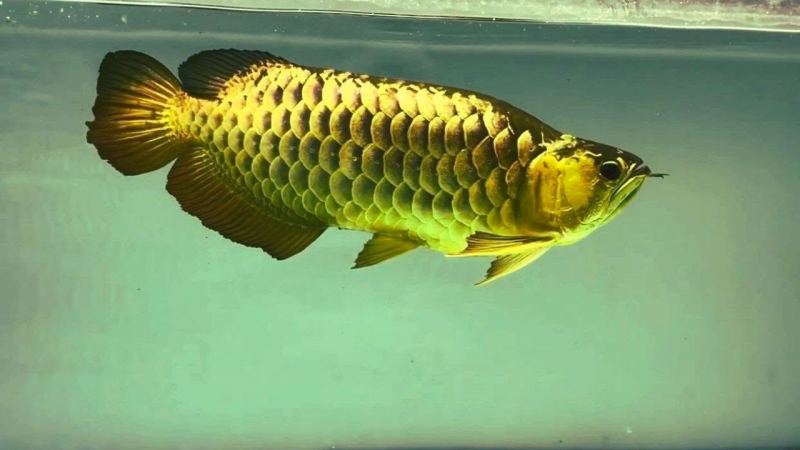
Photo: pinterest.com Video: AROWANA KING -
The Swalesi basslet, Liopropoma swalesi, is a very handsome fish that is resilient and makes an excellent, calm-mannered reef aquarium resident. Despite its beauty, the swalesi basslet has been overtaken by more exotic basslet species, most notably the Candy Basslet.
The Candy Basslet is an illustrious fish that has motivated us to write extensively about it. Its pattern of yellow and blue-purple lines is remarkable no matter how many times you've seen it, and because it prefers deeper waters, a single specimen can cost between $800 and $1000.
While they may not have the same spectacular color when first purchased, this fish can really develop into magnificent fish of its own over time.
The Candy Basslet is smaller than most Liopropoma species and will remain so, with a body length that can reach 6.0 cm. Males typically reach 5.1 cm and females reach 4.45 cm. There are roughly 67 dorsal spines and 1,213 dorsal soft rays in the Candy Basslet. Their head, body, and caudal fin have horizontal orange and lavender stripes split by red lines, giving it a defined vignette.
They also have the classic torpedo-shaped body found in Liopropoma species. The two black specks on the back of the caudal fin are distinguishing indicators. Additionally, gill rakers are included. The Candy Basslet is covered in ctenoid scales, with the exception of the lips and a little piece of the front of the snout. It has a rounded caudal fin and an anal fin located behind where the second dorsal fin begins.
The Candy Basslet is one of five Liopropoma species found in the deep waters of the tropical Atlantic Ocean, from the Florida Keys and the eastern Caribbean to the northern coast of South America. It is most usually found in the vicinity of the island of Curacao.
Price: $1,000
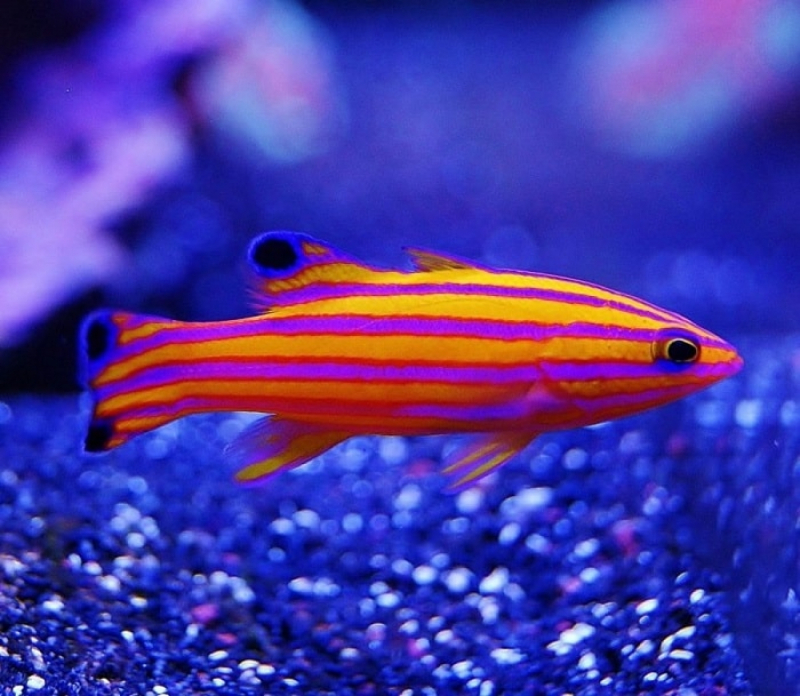
Photo: plugon.us Video: Kamperet















